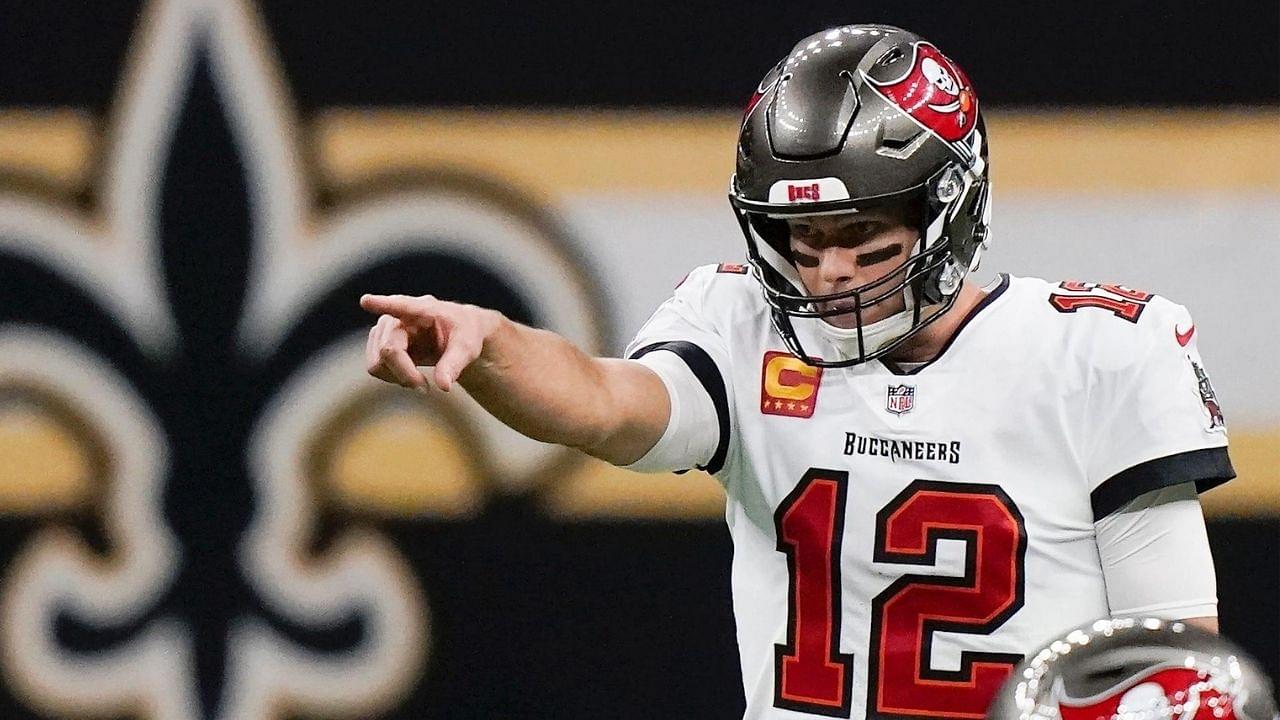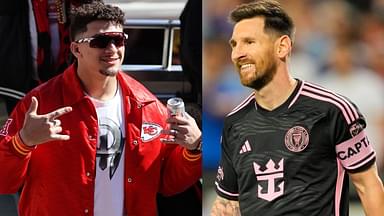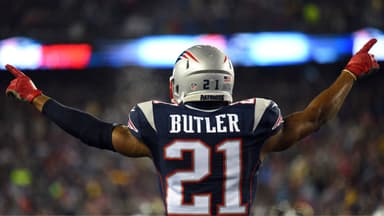The NFL, or more specifically American Football, may not be played worldwide, but it is the single most strategically advanced and complex professional sport in the world.
Advertisement
Coming from an NFL writer, this take may sound biased but don’t worry, you’ll believe me too by the end of it. American Football is always shown to be a “jock’s game”, whether it’s in a movie, a TV show, or anywhere else.
Only the biggest, strongest, and fastest people seem to play it. The hits look violent, and it looks more like a display of brute force over anything. However, all these movies and TV shows fail to capture the mental battle that plays on in the background.
Even as a fan of the game, it can be easy to miss. On TV, we don’t look out for the alignment shifts a team makes, or the subtle tap a quarterback might give his center before snapping the ball. Instead, we only see the results. We see a 50-yard touchdown bomb and laud the quarterback for his tight throw or the receiver for his impressive catch.
But, what made that play possible? American football is by and far as much a mental game as it is a physical one, perhaps even more. It is also the sport that requires the most strategy out of any other sport, and here’s why:
Goff sees two high and checks to a run play. Smart play, OL just got manhandled. pic.twitter.com/kgzsoUCosu
— CJL (@CJL_nfl) January 26, 2019
First Rule Out Individual Sports
Before I talk about the NFL itself, we have to talk about individual sports vs. team sports, and why we can rule out individual sports in this argument.
When we consider individual sports, we have to realize that rely far more on the skillset, talent, and athletic ability of a player rather than strategic planning. Of course, this doesn’t mean that strategy doesn’t play a large role in individual sports (because it definitely does), but that strategy has a lesser significance when compared to a team sport.
In an individual sport, it’s just you against everyone else. You don’t have any teammates to rely on, and so there’s nobody to mask your mistakes. Your lack of a particular ability or athletic level can’t be covered up by anyone else.
Therefore, it’s much more important that an athlete playing an individual sport works to develop their skillset and athletic abilities the most. Building strategy will help for sure, but there’s only a certain limit to which it can take you, and this limit is much lower in an individual sport than a team one.
You can study your opponent and plan the perfect way to beat them, but if your body can’t do the things you want it to, you won’t be able to “outsmart” them, or if there’s a move you can’t perfect which is important for your strategy, you won’t win.
In a team sport, if there’s something you can’t do, but your teammate can, then it becomes easier to implement a strategy, and you don’t have to work on developing that specific skillset because someone else has it so you can plan around it. In an individual sport, the strengths and weaknesses of a player are on that player ALONE.
Additionally, in a team game with maybe 5 or 11 different people who each have different skillsets and talent levels, it’s far more important to find out how to build a strategy that maximizes everyone’s potential so everyone plays to their best.
You have to figure out how certain players will mesh with others and if their skills complement one another or not. The more players you add on, the harder this becomes, and so again strategy becomes much more important.
Thus, while individual sports may require more skill, they are less strategic than team sports.
Three Reasons The NFL (American Football) Is The World’s Most Strategically Advanced League
1. Plays on Plays on Plays
The NFL is a game of plays. More than any other sport, the NFL relies on set plays and play-calls made before the ball is snapped. While sports like football (soccer), hockey, or basketball have long periods of continuous, free-flowing action, the NFL is very “start-stop” in nature.
At most. a single offensive play might last a minute. Therefore, the NFL becomes less about improvisation than other sports might. Again, this doesn’t mean there’s no improvisation in the NFL, but just that there’s less of it than there is in other sports.
This means that pre-planning a play and building an appropriate strategy is far more important because everything happens within such a short period. In basketball, you could be looking at a 5-minute stretch where you want limit your opponent and score a certain amount, which means that every 10-15 second interval isn’t important. The same goes for something like soccer or hockey.
However, in American Football, all the action happens in those 10-15 seconds, and to get the most out of it, you have to ensure everything is planned properly for that one play.
Let’s talk about the plays themselves. American Football playbooks often contain thousands of plays:
“It’s about the size of a dictionary. Maybe a little bit thicker than that.” – Former Denver Broncos Receiver
An NFL player may not have to memorize ALL of these plays for one single game, but they should be ready for any scenario which may require them to recall any random play at any moment. The playbook is the bible of any team.
Additionally, one single play may have several different variations to it. It could be a small change in a blocking assignment, the running back shifting to the quarterback’s right, or a receiver stopping his route maybe three yards before he would normally, there are so many different ways one play could go.
It could also be a big change, like a player changing his route entirely, the quarterback moving out of the shotgun to under center, or flipping the play to go the right instead of the left. However, these changes can have monumental impacts on how the play turns out.
A quarterback will simply kneel in his huddle, say something like “0 Out Slot Cougar A Left” (this is an actual play call from Tom Brady’s wristband), and all 10 other players have to know exactly what they’re doing. The same thing applies to defense. A team’s game-plan also changes drastically depending on who they’re playing.
Tom Brady’s play-call wristband is proof NFL QBs have the hardest job in sports https://t.co/9OEbUSuaPn pic.twitter.com/rzwC49VcGF
— For The Win (@ForTheWin) June 9, 2016
So, while one week you may be perfecting and memorizing a series of passing plays, the next week you may be doing the same for running plays.
I haven’t even begun talking about how complex the plays themselves can be, but just the sheer volume and the variations that exist should be enough to tell you how much strategy goes into this game. And, this doesn’t even discuss defensive play-calling.
A team has to coordinate both its offense and defense for every play of every game, and every player must know their assignments on any play, both offense and defense. Quarterbacks have to learn how to read defenses so they can make audibles, defenses have to read offenses and learn about the matchups they’re going to need to implement (zone or man defense, blitz heavy or conservative).
Dr David Redish, a professor in the Department of Neuroscience at the University of Minnesota studied how hard learning an NFL playbook can actually be and his findings can be found here.
“It’s like trying to play a musical instrument that’s scheming against you.” – Dr Redish
We also haven’t even gotten to special teams, but you get a general idea. Fake punts and kicks, kickoff and punt coverage schemes, even kicking a field goal and its blocking assignments. All those add on to the already complex playbook, and they too require intense planning as special teams can often be the deciding factor in a close game.
Also Read: NFL Draft 2021: Will Fans Be Allowed to Attend the 2021 NFL Draft in Cleveland?
2. 22 Players, 22 Positions, 22 Different Roles
Building upon how advanced play-calling is, we also have to see how the number of positions, and more importantly the number of roles on an American Football team is far greater than that of any sport.
An NFL team consists of 22 players, 11 on offense and 11 on defense (excluding subs and reserves which make for a 53-man roster). While soccer also has 11 players on both sides, the difference is that both sides have the same roles. Each side has a group of attackers, midfielders, and defenders.
In American Football, you have different players and teams for offense and defense. Additionally, while you can categorize the skill players in soccer into four major groups (attackers, defenders, midfielders, and goalkeeper), you’d need about five groups for the offense of an NFL team and four groups for the defense.
However, even these groups can be broken down into smaller subgroups. An offensive line has guards who specialize in double teams and pulling out on plays, tackles who are the most athletic and physical, and centers who call out blocking assignments and snap the ball.
A box safety has to learn how to rush the quarterback and play more downfield while a free safety has to roam the perimeter and be a ballhawk. The examples go on. Thus, strategy comes into play as you have to account for ALL these subgroups.
You would have to determine which people fit best into which positions, which positions should be doing what action on a play while sticking to their role, and sometimes even which positions are necessary for a play.
Now, you could say that soccer also has 11 roles on one side, and that there also exist subgroups within those roles. However, this where point 1 comes back as the usage of plays means that each player’s assignment at any given time could be vastly different from another player in a different subgroup whereas in soccer it would be more similar.
What about basketball or hockey? Smaller team sizes mean less positions and roles to account for, and therefore less variance and planning. How about baseball or cricket which also field big rosters?
The game accounts for fewer positions and subgroups as there usually two major groups (batsmen or batters and bowlers or pitchers), and so there are fewer roles to account for (and as always point 1 applies since these games are more about “in-the moment” split second decisions).
American Football also has perhaps a “third team” of skill players as special teams is a vital aspect of any NFL team. Kickers, punters, returners, and coverage players all play a vital role as special teams is critically important to winning the battle of field position and even scoring sometimes. This adds another layer of positions and roles to account for, which most sports don’t have.
3. American Football Itself Is Complicated & Has a Million Different Scenarios & A Weird Substitution System
If you had to explain American Football to someone who has no idea what it is, it would be hard. If you had to do the same for soccer or basketball, explaining the fundamental concepts would be easy:
“You have to use only your legs and kick the ball into the goal” or “You have to dribble the ball and shoot it into the basket.” Now this isn’t meant to sound reductive or diminish how layered and complex both these sports are. Penalties, rules, strategy, and everything else adds that.
However, the point is that explaining the basic concept is relatively simple. If you try to do the same for American Football, it might go something like this: “The offense has to go from their side of the field to the other side, in ten yard intervals with three or four chances for every 10 yards while the defense has to stop them.”
That’s hard to understand right away. Now, what does this mean for how strategic the NFL is? Well, all the different rules and actions you have to learn to understand American Football mean that there exist SO MANY different situations throughout the course of a game.
A fourth and short is played very differently at the start of the game compared to towards the end of a close game. Additionally, with the number and type of rules you have to memorize, it means that studying the rulebook becomes imperative, and that strategy can revolve around these rules in ways that it can’t in other sports.
Remember when Bill Belichick used funky offensive formations against the Baltimore Ravens in 2015 with only four linemen? Well, that was possible because he found loopholes in the rulebook. The NFL rulebook requires that five players must be declared as ineligible receivers, but it doesn’t specify which players they have to be.
Thus, the Patriots would line up in a traditional way, but a player who wasn’t an offensive lineman would declare himself ineligible while an offensive lineman would be eligible. The Ravens would, by rule, only get to know about this a few moments before the plays were called. These kinds of exploits don’t exist in other sports.
Additionally, strategy also becomes more complicated as an NFL team has no restrictions on substitutions and substitutions occur extremely regularly. That means that depending on the scenario, different personnel could be brought in at any time.
While in soccer a maximum of three subs are allowed and in basketball or other sports substitutions only happen during timeouts or breaks, American Football is much different. Any player can be substituted at any time, between plays, for any amount of times. This leads to more variance, and therefore, it again requires more strategizing and planning.
American Football: Truly The Most Strategic And Complex Sport
So, there you have it. American Football involves so much strategy and is complex beyond levels of other sports. There’s a reason why there was a Bill Belichick vs. Tom Brady debate when it came to determining who was most responsible for the Patriots dynasty.
There’s also a reason that while Brady may not be the most physically gifted quarterback, his mind games, and football IQ makes him a 7-time champ, and the best to ever do it.
American Football is a chess game in so many ways. To be good in the NFL, you can’t just be freakishly athletic or extremely refined and skilled, you must be incredibly intelligent as well, more than any other sport may require you to be.







